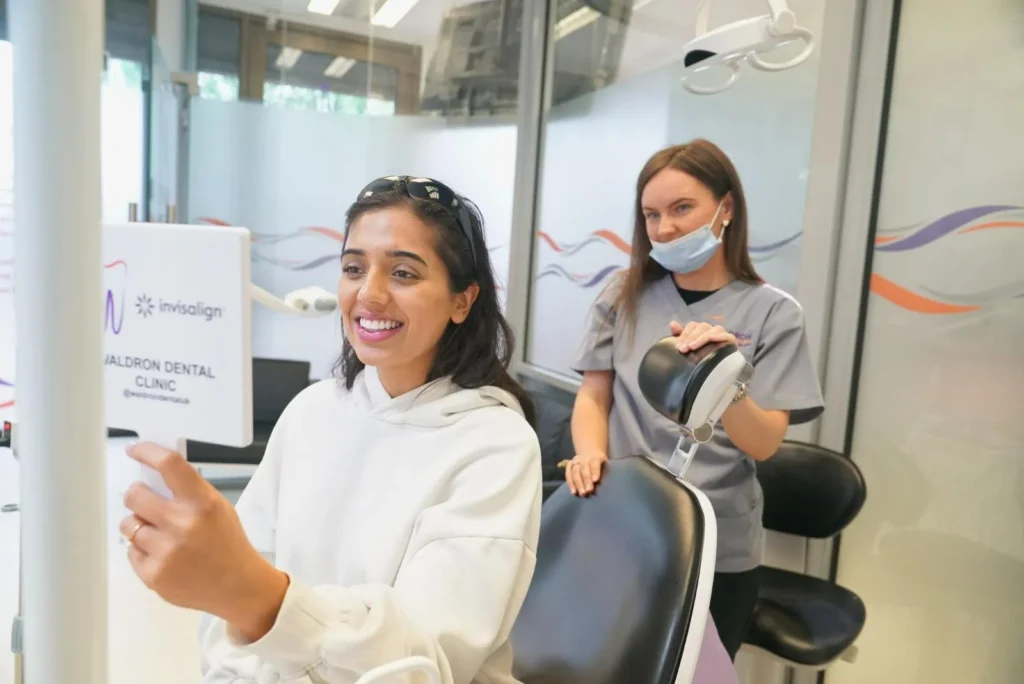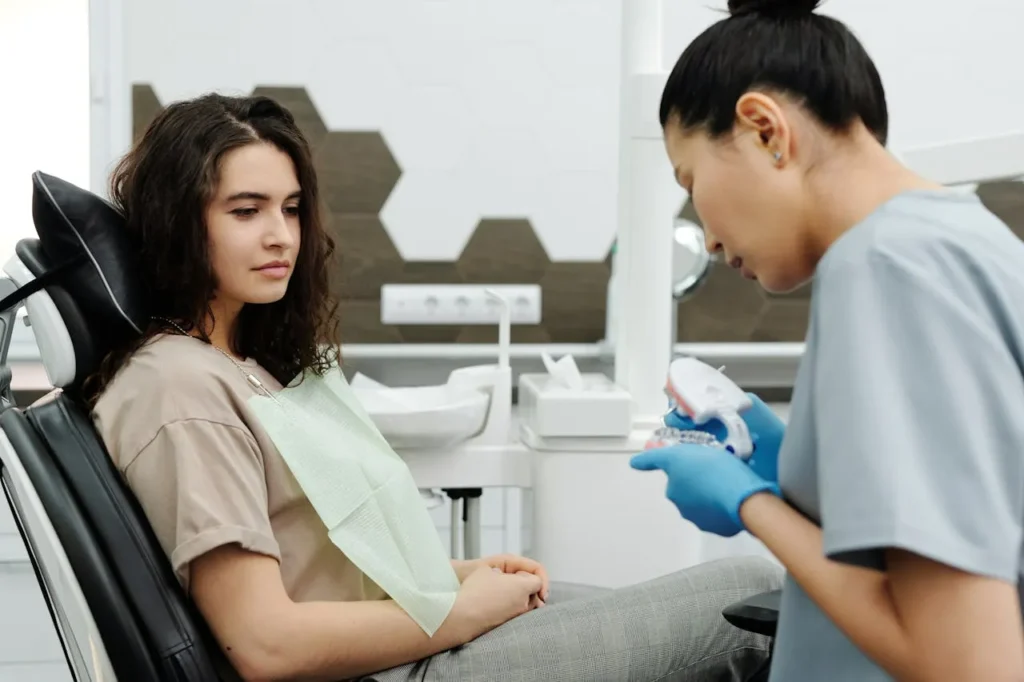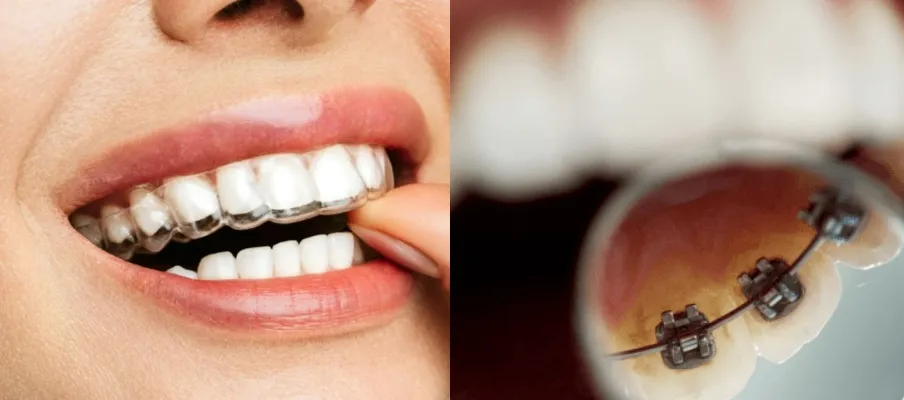Choosing the right orthodontic treatment can be as complex as the alignment issues you’re looking to correct. Whether you’re considering lingual braces or Invisalign, understanding the pros, cons, and practical implications of each option is essential. Below is a clear, detailed comparison based on factual insights, helping you make an informed decision aligned with your dental needs.
How Invisalign and Lingual Braces Work
Understanding Invisalign
Invisalign uses a series of custom-made clear plastic aligners that gradually shift teeth into place. They’re made using 3D digital scans of the patient’s mouth and are changed every one to two weeks.
- Aligners must be worn for at least 22 hours a day
- New trays are provided frequently to continue shifting teeth
- Regular checkups are needed, though less often than with traditional braces
Invisalign is designed to fit seamlessly into your daily routine, with fewer disruptions to your eating habits or oral hygiene practices.
How Lingual Braces Function
Lingual braces use metal brackets and wires, similar to traditional braces, but they’re fixed to the inside (lingual side) of the teeth.
- Custom-fitted to the shape of each patient’s teeth
- Adjustments are done monthly by an orthodontist
- Invisible from the outside but function like regular braces
They are highly discreet and capable of managing complex alignment issues while maintaining aesthetics.
Are Lingual Braces Faster Than Invisalign in Real Cases?
For individuals with mild to moderate orthodontic issues, Invisalign may provide a quicker solution.
- Invisalign can yield results in as little as 6 to 18 months
- Requires a minimum of 22 hours of daily wear
- New aligners are introduced every 1–2 weeks to maintain steady progress
This treatment is ideal for those who can commit to the discipline it demands. Any deviation in daily wear time can extend treatment duration and compromise results.
Are Lingual Braces Faster Than Invisalign for Complex Cases?
Depending on case complexity, lingual braces generally offer treatment timelines ranging from 18 to 36 months.
- Highly customised to individual tooth structure
- Adjustments are typically performed monthly
- More efficient than aligners for severe crowding, bite issues, or rotation
Insights suggest that lingual braces offer better control in complex cases due to their fixed and precise mechanics.
Aesthetic Appeal and Discreet Options
One of the strongest considerations for many adult orthodontic patients is appearance.
- Invisalign: Clear, nearly invisible from the outside; removable for eating and brushing
- Lingual Braces: Hidden behind the teeth; fully invisible in social settings, but may slightly affect speech early on
Maintenance and Oral Hygiene
The ability to maintain good oral hygiene often becomes a deciding factor.
- Invisalign aligners are removable, making brushing and flossing easier
- Lingual braces are fixed and located behind teeth, requiring more effort and tools like interdental brushes to clean around brackets
While Invisalign offers more convenience, lingual braces demand a thorough routine to prevent plaque buildup and ensure gum health.
Comparing Treatment Commitment and Lifestyle Impact
Invisalign
- Flexibility in eating and cleaning routines
- Demands strict 22-hour daily wear
- Not ideal for those who forget or remove aligners frequently
Lingual Braces
- No daily compliance once fitted
- May cause temporary speech difficulties and tongue discomfort
- Requires regular orthodontic visits for wire adjustments and progress monitoring
Patients who prefer a ‘fit-and-forget’ approach may find lingual braces more appealing despite their initial adjustment.
Lingual Braces vs Invisalign: Key Differences in Treatment Speed and Efficiency
- Removability: Invisalign is removable; lingual braces are fixed
- Visibility: Invisalign is clear and discreet; lingual braces are entirely hidden behind teeth
- Oral Hygiene: Easier with Invisalign due to removability; more challenging with lingual braces
- Compliance: Invisalign requires discipline; lingual braces work independently of patient behaviour
When Invisalign May Be the Better Option

For those with less complicated alignment issues and a strong sense of discipline, Invisalign tends to offer a more flexible, faster route.
- Best suited for mild to moderate misalignment, spacing or crowding
- Minimal impact on speech and eating routines
- Favoured by professionals and public-facing individuals
It also appeals to individuals with active lifestyles who need a treatment option that adapts to their routines. Its popularity echoes national trends – around 200,000 young people undergo NHS-funded orthodontic treatment each year in the UK.
When Lingual Braces Might Be More Suitable
Lingual braces are better aligned with the needs of patients requiring more complex orthodontic correction.
- Effective for deep bites, rotated teeth, and severe crowding
- Offers precise control over each tooth’s movement
- Ideal for patients wanting a fixed, invisible solution
Their discreet nature and clinical effectiveness make them an ideal choice for individuals seeking thorough correction without compromising on aesthetics.
What to Consider Before Choosing
Every smile is different, and so is every treatment plan. The final decision should always follow a full clinical assessment.
Consider the following:
- The complexity of your case
- Your ability to commit to treatment protocols
- Lifestyle preferences for eating, speaking, and oral hygiene
- Comfort with attending regular orthodontic appointments
A qualified orthodontist will provide a comprehensive evaluation using digital scans, X-rays, and clinical examination to recommend the most suitable approach.

Final Thoughts
Are lingual braces faster than Invisalign? The answer lies in the specifics of your dental condition. Invisalign may be quicker for straightforward cases with consistent aligner use. Conversely, lingual braces may take longer but are often more effective for complex alignment issues.
At Waldron Dental, we provide bespoke orthodontic solutions tailored to your smile. Whether you’re drawn to the flexibility of Invisalign or the discreet precision of lingual braces, our team ensures you receive expert care and the most suitable plan based on your unique needs.













